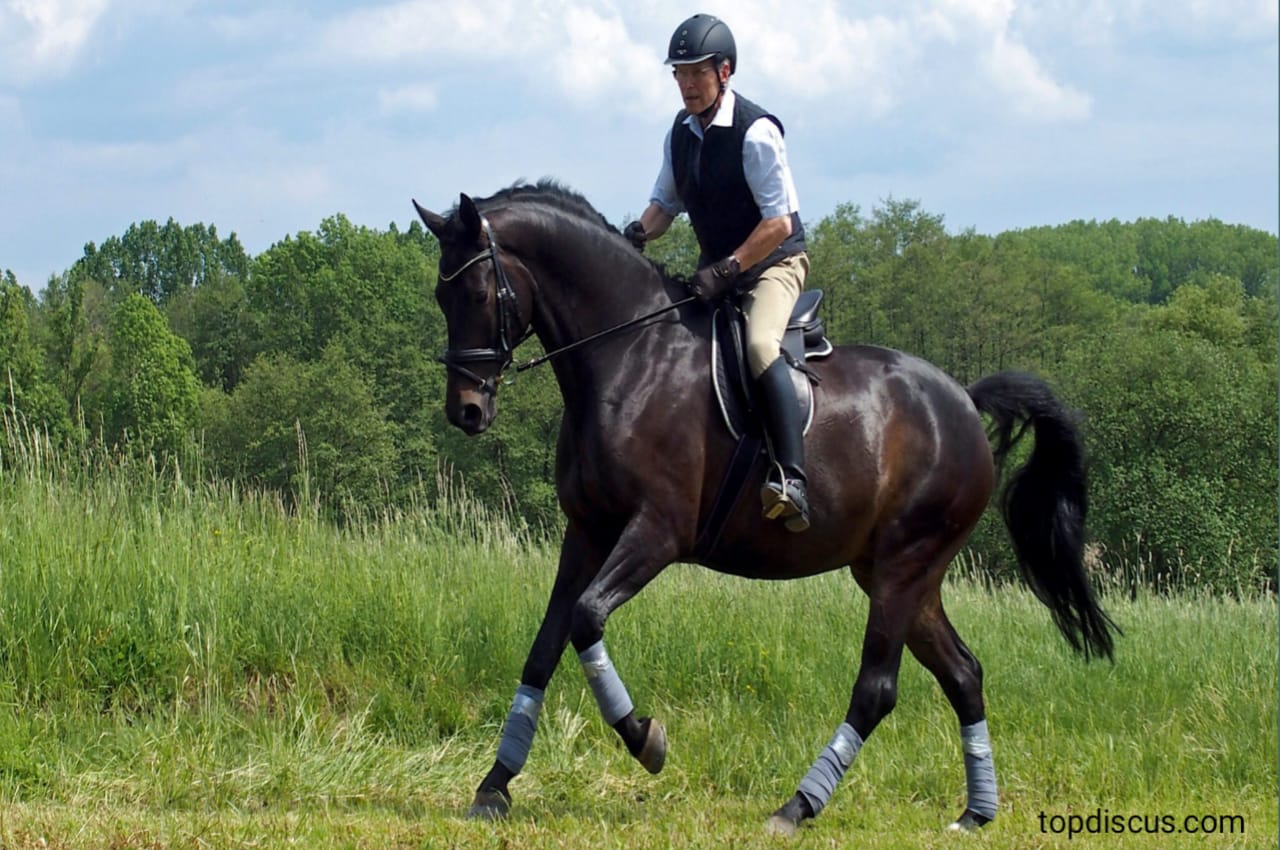Best Training Tips for Horse Riding. Welcome to the thrilling world of horse riding! Whether you’re a beginner eager to embark on this exhilarating journey or a seasoned equestrian seeking to enhance your skills, proper training is critical to becoming a confident and skilled rider. Riding horses grants you an incredible connection with these majestic creatures and offers numerous physical and mental benefits.
So saddle up as we dive into the best training tips for horse riding, guaranteed to take your equestrian abilities to new heights! Get ready for an exciting ride filled with Balance, strength, safety, and mental preparation – all aimed at making you the best rider you can be. Let’s get started!
Importance of Proper Training for Horse Riders:
Proper training is essential for horse riders to ensure their safety and the well-being of their horses. Without adequate training, riders may lack the necessary skills and knowledge to handle a horse effectively, resulting in accidents or injuries.
One key aspect of training for horse riders is maintaining proper posture and Balance in the saddle. This helps prevent falls and allows riders to communicate more effectively with their horses through subtle cues. Developing strong core and leg muscles is also crucial as it provides stability and enables riders to maintain control over their mount.
In addition to physical training, horse riders must prioritize safety at all times. This includes wearing appropriate protective gear such as helmets and boots, being aware of surroundings, and practising safe riding techniques.
However, proper training for horse riding goes beyond just physical aspects. Mental preparation is equally important. Riders need to cultivate patience, focus, and confidence while working with horses who can be unpredictable at times.
Proper training ensures horse riders have the necessary skills and mindset for a successful equestrian experience. It enhances the rider’s abilities and overall enjoyment of this exhilarating sport while keeping them safe on their equestrian adventures! Our Home Page Link.
Basics of Horse Riding Training:
Proper posture and Balance in the saddle are essential for any horse rider. It’s important to sit tall, with your shoulders back and relaxed. Your weight should be evenly distributed through your seat bones, allowing you to communicate effectively with your horse.
Developing a strong core and leg muscles is crucial for stability and control while riding. Core exercises such as planks and Pilates can help improve your Balance, while leg workouts like squats and lunges strengthen the muscles needed for effective cues.
Safety is a top priority when it comes to horse riding. Always wear appropriate safety gear, including a helmet and sturdy boots. Start with experienced instructors who can teach proper techniques and ensure you’re prepared for any situation.
Mental preparation is just as essential as physical training regarding horse riding. Stay focused on the present moment, listen to your instructor’s guidance, and trust yourself and your abilities. Remember that building confidence takes time – be patient with yourself as you progress.
Remember that consistent training is critical to becoming a skilled horse rider. Practice regularly in structured lessons with an experienced trainer and independent rides where you can apply what you’ve learned. With dedication and perseverance, you’ll continue improving as a rider throughout your journey!
Before Riding a Horse, it is essential to keep in mind these Tips:
1. Maintaining proper posture and Balance
2. Developing strong core and leg Muscles
3. Safety Tips for Horse Riders
4. Mental Preparation for Horse Riding
1. Maintaining proper posture and Balance:
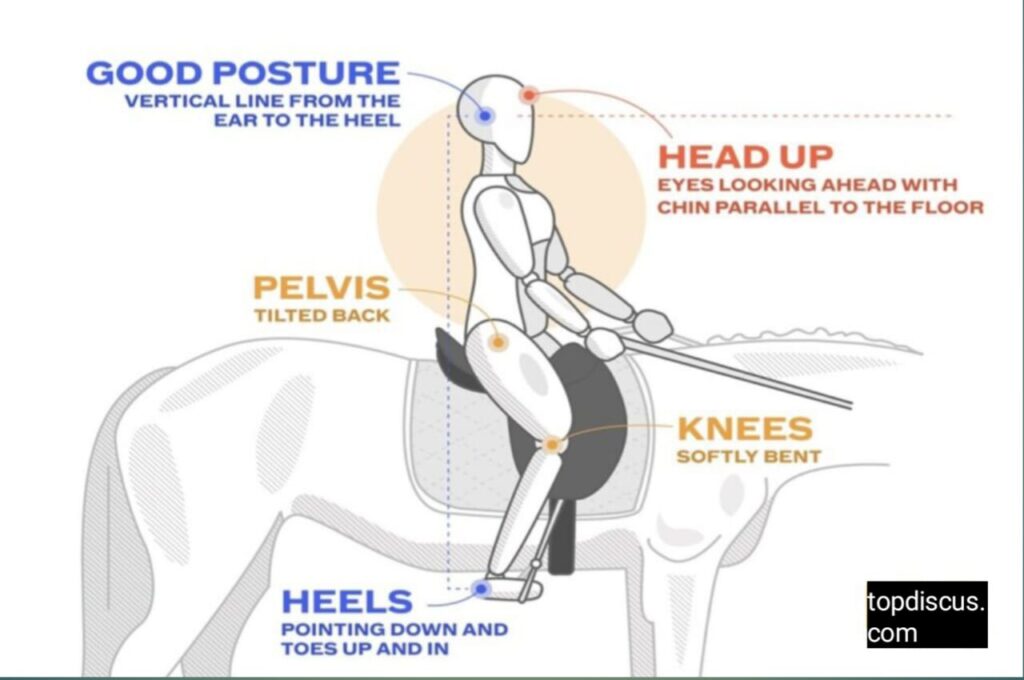 Proper posture and Balance in the saddle are essential for every horse rider. Maintaining a correct posture helps to distribute your weight evenly and communicate effectively with your horse. When riding, sitting up straight and aligning your ears, shoulders, hips, and heels in a vertical line is crucial.
Proper posture and Balance in the saddle are essential for every horse rider. Maintaining a correct posture helps to distribute your weight evenly and communicate effectively with your horse. When riding, sitting up straight and aligning your ears, shoulders, hips, and heels in a vertical line is crucial.
To achieve this position, engage your core muscles and relax your lower back. Keep your shoulders back and down while maintaining a soft elbow angle. Your hands should be positioned slightly wider than shoulder-width apart on the reins.
Balance is critical when riding horses. It lets you stay centred over the horse’s centre of gravity and respond quickly to any movement or direction changes. To improve Balance, practice exercises such as standing in the stirrups at various speeds or trotting without using reins for support.
Furthermore, building strength in your legs will help maintain stability and control while riding. Practice exercises like squats or lunges off the horse to strengthen these muscles.
Remember that achieving proper posture and Balance takes time and practice. Be patient with yourself as you develop these skills – they are fundamental for becoming a skilled rider!
2. Developing strong core and leg Muscles:
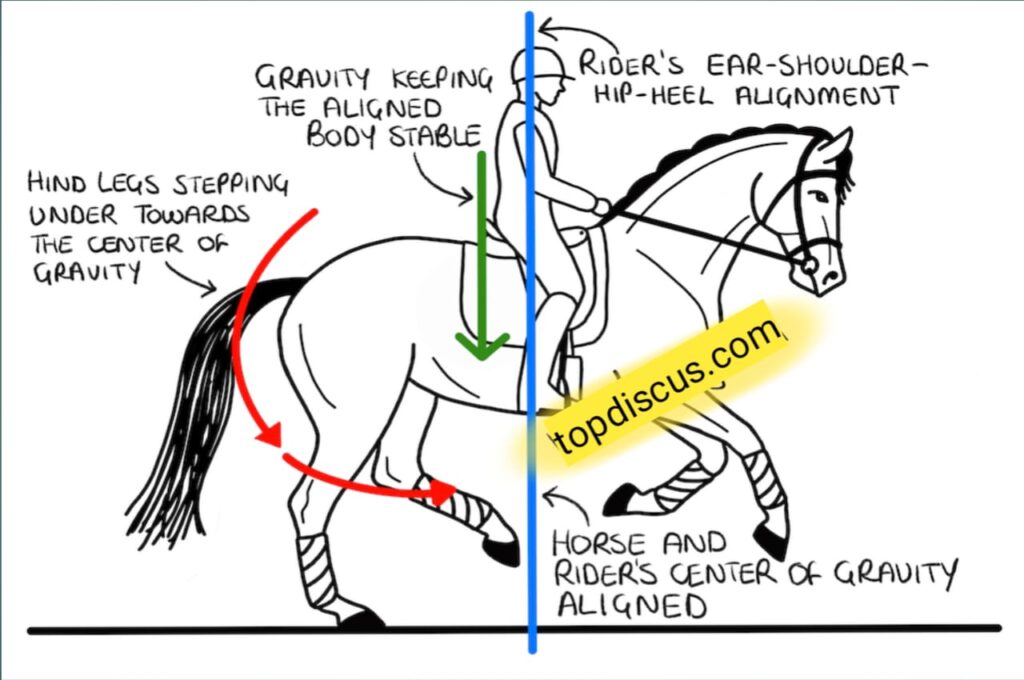 Developing a strong core and leg muscles is essential for any horse rider. These key areas provide stability, Balance, and control while riding. Maintaining posture in the saddle. A w can be challenging without a solid core. A weak heart leads to slouching or leaning forward, affecting your Balance and putting strain on your horse’s back.
Developing a strong core and leg muscles is essential for any horse rider. These key areas provide stability, Balance, and control while riding. Maintaining posture in the saddle. A w can be challenging without a solid core. A weak heart leads to slouching or leaning forward, affecting your Balance and putting strain on your horse’s back.
Incorporate exercises such as planks, crunches, and Russian twists in your fitness routine to strengthen your core. These exercises target the abdominal muscles and help improve overall stability in the saddle.
In addition to a strong core, well-developed leg muscles are crucial for effective communication with your horse. Strong legs allow you to apply precise leg aids without excessive effort or tension. Exercises such as squats, lunges, and calf raises can help strengthen these muscles.
Regularly practising these exercises will benefit you as a rider and improve overall fitness and endurance. “Remember to begin with a low-intensity workout routine and gradually increase the intensity level as you build your strength.”
By focusing on developing solid core and leg muscles through targeted exercise routines, you’ll enhance your riding performance while minimizing the risk of injury or imbalances. So get moving and give yourself an edge in the saddle!
3. Ensuring Complete Safety Measurements:
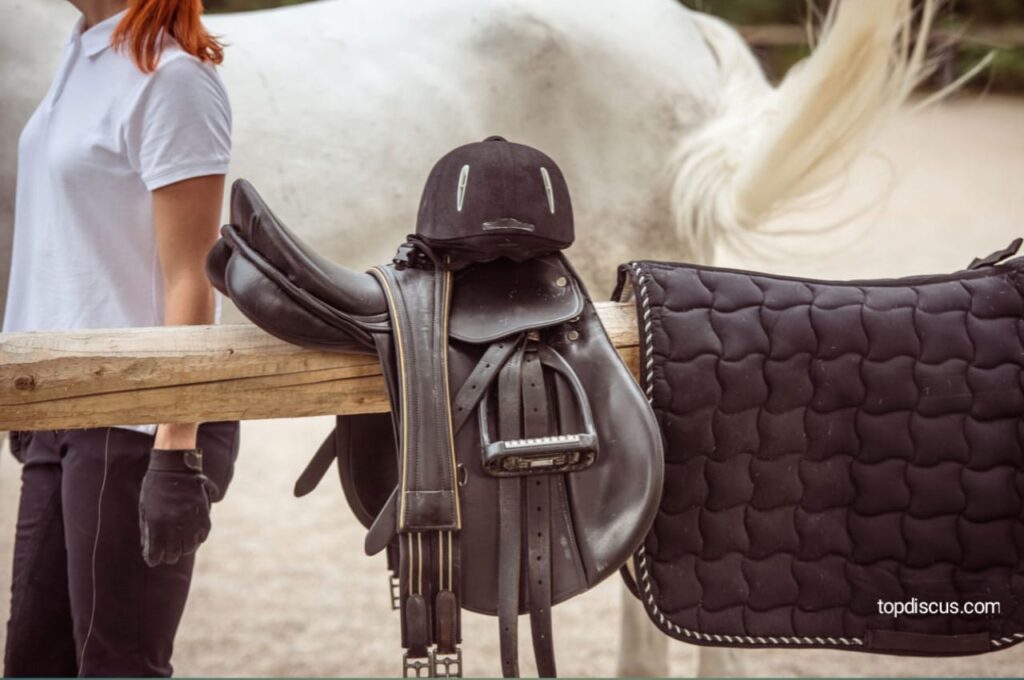 Regarding horse riding, safety should always be a top priority. Whether you’re a beginner or an experienced rider, taking the necessary precautions can help prevent accidents and ensure an enjoyable ride.
Regarding horse riding, safety should always be a top priority. Whether you’re a beginner or an experienced rider, taking the necessary precautions can help prevent accidents and ensure an enjoyable ride.
First and foremost, wearing appropriate safety gear is essential. It is important to wear a helmet that is properly fitted and meets safety standards when cycling or engaging in any other activity that requires head protection. This will help protect your head in an accident or collision. Additionally, sturdy boots with heels will provide grip and stability while riding.
Before mounting your horse, check your equipment for any signs of wear or damage. Make sure the saddle is secure and properly adjusted to avoid slipping during your ride. It’s also important to regularly inspect the bridle, reins, and stirrups for any issues that could compromise your control over the horse.
Maintaining good communication with your horse is crucial for your and their safety. Take time to familiarize yourself with their body language so you can anticipate their reactions and respond appropriately. Use clear signals when giving commands or cues to guide them effectively.
Always be aware of your surroundings while on horseback. Look for hazards like low branches, uneven terrain, or other animals that may startle your horse. Stay alert at all times to react quickly if needed.
Always pay attention to the importance of proper training and instruction from qualified professionals. Learning how to mount/dismount safely, correctly handle reins/brakes/gaits/stops/transitions/balance/posture/core muscles/leg muscles/body weight distribution/saddle position/riding techniques, and understanding basic horsemanship principles will significantly reduce the risk of accidents occurring.
By following these safety tips consistently throughout every ride, riders can minimize risks associated with horse riding activity. Remember: Safety first! Happy riding!
4. Mental Preparation for Horse Riding:
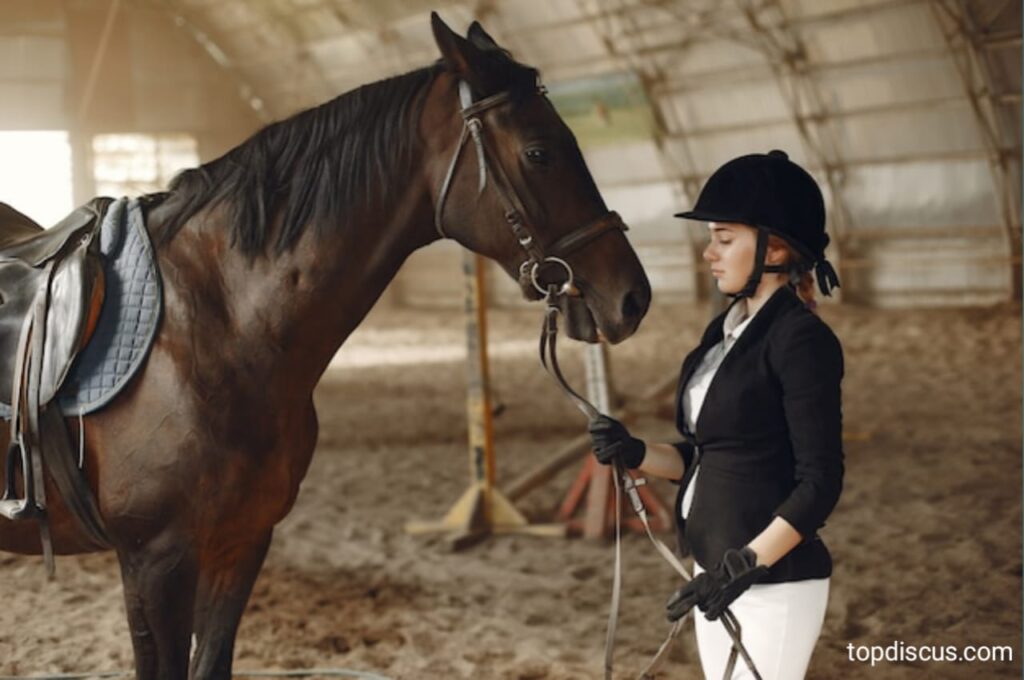 Regarding horse riding, physical skills are just one part of the equation. Mental preparation plays a crucial role in ensuring a successful and enjoyable ride. Here are some tips to help you mentally prepare for your time in the saddle.
Regarding horse riding, physical skills are just one part of the equation. Mental preparation plays a crucial role in ensuring a successful and enjoyable ride. Here are some tips to help you mentally prepare for your time in the saddle.
Visualization is key. Before mounting your horse, take a moment to imagine yourself confidently riding with ease. Visualize each step of the ride – from mounting up to executing various movements or jumps. This mental rehearsal can help build confidence and improve your focus during rides.
Practice mindfulness while riding. Be fully present in the moment, paying attention to your body’s sensations and connecting with your horse’s movements. By being mindful, you can better respond to any unexpected situations that may arise.
Another important aspect is managing fear and anxiety. It’s natural to feel nervous when dealing with such powerful animals as horses, but learning techniques like deep breathing or positive self-talk can help calm those nerves.
Set realistic goals for yourself during each ride. Whether mastering a particular technique or simply enjoying time spent with your horse, having achievable goals helps maintain motivation and provides a sense of accomplishment.
Remember, mental preparation is as essential as physical training for horse riding success! So, take the time before every ride to prepare yourself mentally for a fantastic experience in the saddle!
For More Information
Conclusion:
Consistency is vital when training for horse riding, whether a beginner or an experienced rider; ongoing training and practice are essential for improving your skills and developing a strong bond with your horse.
You can maintain control and stability while riding by focusing on proper posture and Balance in the saddle. Strong core and leg muscles will improve your overall strength and help you communicate effectively with your horse through subtle cues.
In addition to physical training, it is essential to prioritize safety when riding horses. Always wear appropriate protective gear, such as helmets and boots, and be aware of your surroundings. Regularly checking equipment like saddles, bridles, and stirrups is also crucial to prevent accidents or injuries.
Equally important is mental preparation before getting on a horse. Riding can be physically demanding and mentally challenging, so taking the time to relax, focus, and visualize successful rides can significantly enhance your performance.
In conclusion (without explicitly stating “in conclusion”), consistent training is vital in becoming a skilled horse rider. By incorporating these tips into your routine – focusing on posture, building strength, prioritizing safety measures, and preparing mentally – you will undoubtedly improve your abilities in the saddle. Remember that progress takes time; be patient with yourself as you embark on this exciting journey of becoming an accomplished equestrian. Happy riding!
